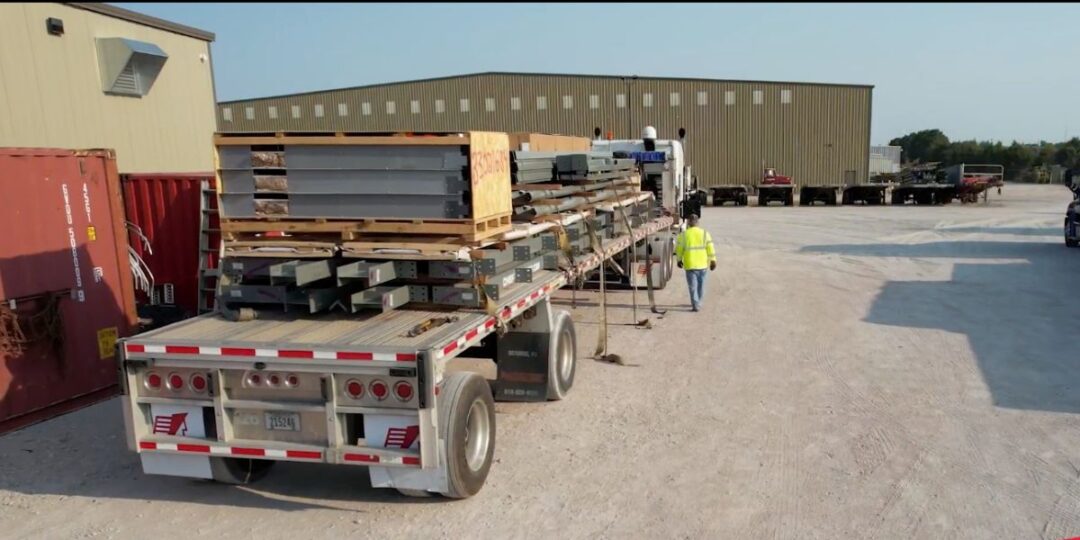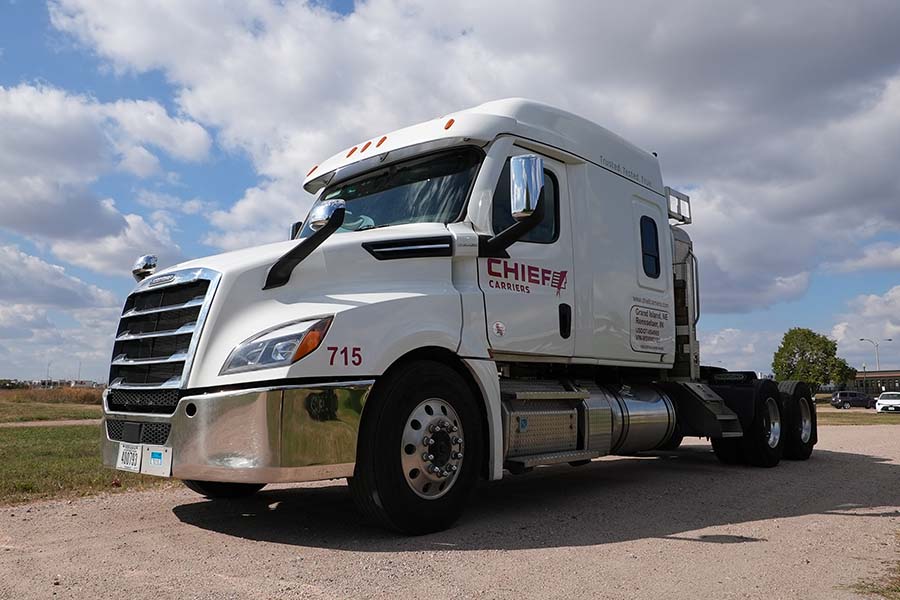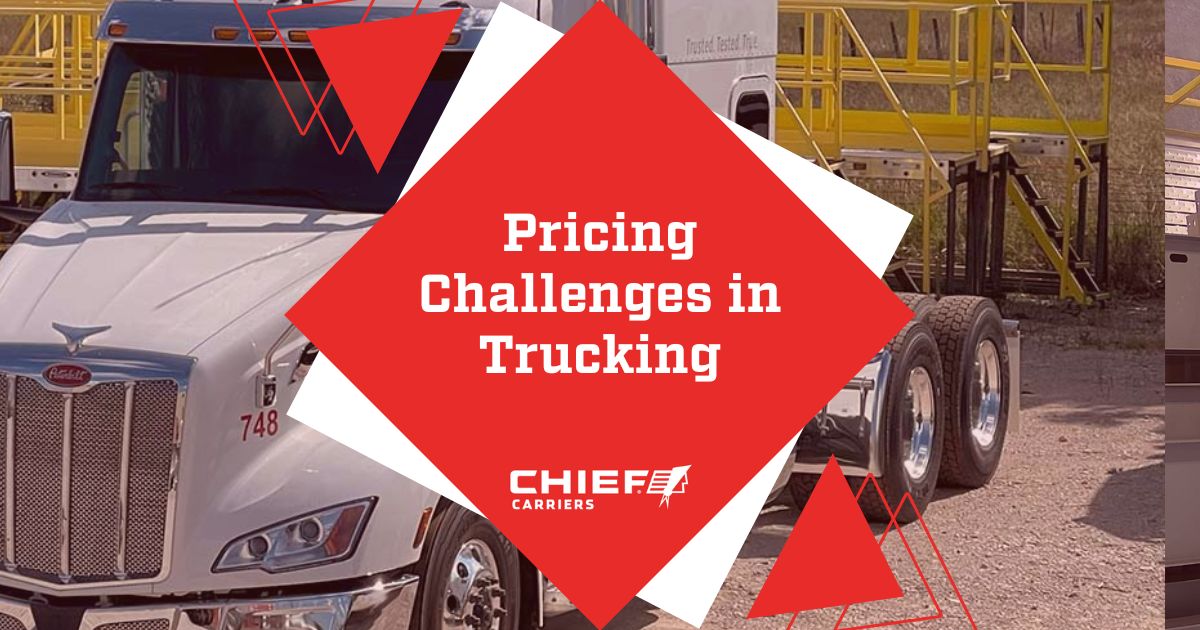Mastering Truck Driving Cost in Today’s Trucking Landscape
Tackling the pressing concern of escalating truck driving costs, our industry faces a critical challenge that demands attention and strategic action.
In an industry where every cent counts, understanding and overcoming these hurdles is not just beneficial; it’s essential for survival and growth.
At Chief Carriers, we’re acutely aware of these issues and are committed to addressing them head-on.
In this blog, we’re taking a closer look at the pricing challenges that trucking companies, big and small, face every day.
From fluctuating fuel prices to the nuances of driver pay rates, we’re covering the bases to provide you with actionable insights.
Our goal? To equip you with strategies that not only tackle these issues head-on but also pave the way for a more profitable future in trucking.
Let’s navigate these challenges together, finding practical solutions to keep our wheels turning efficiently on the road ahead.

Navigating Truck Driving Cost Challenges
In the trucking industry, it’s crucial to navigate pricing challenges for survival and growth.
Fluctuating fuel prices, regulatory demands, and market competition make cost management and pricing strategies more complex.
Trucking companies must be agile and strategic in addressing these challenges.
Understanding and tackling pricing hurdles is essential. It helps optimize operations, stay competitive, and ensure timely delivery of goods.
The Current Landscape of Trucking Costs
The trucking sector grapples with variable costs such as fuel, maintenance, and labor. These elements fluctuate based on market conditions, making budgeting a complex task for companies.
The Importance of Addressing These Challenges
Strategic management of these issues enhances efficiency, competitiveness, and sustainability in the rapidly evolving transportation industry.
Understanding Trucking Costs Per Mile
To effectively manage a trucking business, understanding the costs per mile is crucial.
Costs includes various expenses critical to operations, from fuel to maintenance, and driver wages. Analyzing these costs allows for more strategic financial planning and competitive pricing strategies.
Having a clear grasp of per-mile costs helps in budgeting and forecasting, essential for long-term success and stability in the trucking industry.
Breaking Down the Components
Trucking costs per mile are mainly influenced by fuel, vehicle maintenance, and driver wages. These factors significantly impact expenses, affecting financial management and pricing strategies.
Impact of Market Variability on Costs
Fluctuations in fuel prices and shifts in the labor market can quickly change costs per mile. To stay profitable and competitive, businesses need to adjust to these fluctuations.
Strategies for Optimizing Truck Driving Pay Rates
Optimizing pay rates for truck drivers is crucial for attracting and keeping skilled professionals while keeping operational costs in check.
The trucking industry is dealing with a significant shortage of drivers, making competitive pay rates a key factor. It’s important to make sure these rates match the company’s financial health for long-term success.
By making strategic adjustments to pay structures, companies can handle this challenge well, making sure drivers feel appreciated without hurting the company’s finances.
Balancing Competitive Wages with Operational Costs
To balance competitive wages with operational costs, companies should assess financial capabilities and market standards. Strategic planning helps offer competitive pay rates while managing expenses for business sustainability.
Innovative Pay Structures to Boost Morale
Innovative pay structures like bonuses boost driver morale, loyalty, and company performance. They align driver success with efficiency and dedication, motivating the workforce.

How Does Inflation Affect the Trucking Industry?
Inflation presents a big challenge for the trucking industry by directly impacting costs and squeezing profits.
With prices of goods and services on the rise, trucking companies need to adjust their pricing strategies to stay competitive and cover higher expenses.
This economic pressure demands a strategic approach to ensure businesses can adapt to inflation without compromising service quality or financial stability.
Inflation’s Direct Impact on Operational Costs
Inflation drives up fuel, maintenance, and driver costs, hitting trucking profits. Plan finances carefully to stay profitable.
Tactical Approaches to Mitigate Inflation Effects
Trucking companies can lower costs and stay competitive by improving fuel efficiency, upgrading fleets, and negotiating better contracts. These strategies help combat inflation effects.
Addressing Why Drivers Are Leaving the Trucking Industry
The trucking industry is facing big hurdles when it comes to keeping and hiring drivers, which are crucial for keeping things running smoothly.
Companies really need to deal with these issues because there are too many drivers leaving and not enough good ones to choose from.
These problems not only put a strain on resources, but they also affect delivery schedules, showing that some smart fixes are needed.
Why Drivers Leave: Understanding the Core Issues
Drivers often quit because they don’t get paid enough, can’t be home as much as they’d like, and feel like they’re not supported. Understanding these main problems is the first step in coming up with ways to make the job better and keep drivers happy and loyal.
Effective Solutions for Retention and Recruitment
Offering competitive pay, flexible schedules, and strong support boosts driver retention and recruitment. By investing in these areas, you show dedication to driver well-being, attract new talent, and keep experienced staff.
Transition Challenges: From Company Driver to Owner-Operator
Moving from a company driver to an owner-operator presents a significant shift, offering both potential rewards and notable challenges.
This transition demands more than just a change in job title; it requires a complete mindset adjustment.
Drivers transitioning to owner-operators need to delve into the entrepreneurial side of the trucking industry, taking on responsibilities like financial management and client acquisition to thrive in their new role.
Success in this transition greatly hinges on recognizing and preparing for these hurdles effectively.
By acknowledging and getting ready for these changes, individuals can set themselves up for success in their new entrepreneurial endeavor.
Preparing Drivers for Ownership
To succeed in truck ownership, drivers need training in business management, finances, and market trends. They must go beyond driving skills to run a successful trucking business effectively
Support Systems for New Owner-Operators
New owner-operators get valuable support like mentorship, financial advice, and networking. These resources help them start strong and build a solid business foundation.

Exploring Why Do So Many Trucking Companies Fail
Many trucking companies struggle to stay afloat, especially in their early years.
The reasons behind this high failure rate are complex, including issues like financial problems, not following regulations, and tough competition.
It’s vital for both new and existing companies in this industry to grasp these root causes to avoid common mistakes.
Success in trucking requires thinking ahead, being flexible, and managing finances carefully.
Common Reasons for Trucking Business Failures
Trucking businesses fail from cash flow issues, inadequate capital, and underestimating costs. Poor management of rates and customer relationships worsens financial strain.
Strategic Planning for Longevity and Success
To succeed long-term, a trucking company must have a solid strategic plan with strong financial management and market analysis. Investing in tech for better efficiency and customer service is key.
Using Technology to Combat Pricing Challenges
Facing ever-changing pricing hurdles, the trucking industry is looking to technology for answers.
New tech tools, like telematics and fleet management software, are transforming how companies track and cut operational expenses.
These advancements provide instant data on fuel use, route efficiency, and driver performance, empowering smarter decision-making.
By tapping into technology’s potential, trucking companies can boost efficiency, leading to sharper pricing tactics and better profits.
The Role of Tech in Operational Efficiency
Technology streamlines operations, cuts fuel usage, and improves routes, boosting profits. GPS tracking and automated logistics boost efficiency.
Success Stories in Tech Adoption
Many trucking companies benefit greatly from using tech. For example, telematics helps fleet operators monitor vehicle health. This reduces downtime and maintenance costs, showing the value of embracing tech in trucking.
How Regulations Impact Trucking Costs and Pricing
Regulations play a big role in how much it costs to run a trucking business and, as a result, what prices companies can offer.
Things like emissions rules and limits on how long drivers can work can make it more expensive to operate. Companies may have to spend more money to follow these rules, even though they’re important for safety and the environment.
Meeting these regulations often means companies have to change how they work, like buying new technology or trying different methods.
It can be tough to balance following the rules with keeping costs down, especially in an industry where profit margins are small.
Making sure a company can offer competitive prices means finding ways to follow the rules without spending too much.
Navigating the Regulatory Landscape
Trucking companies must understand and navigate regulations to adjust operations, ensuring compliance and cutting costs.
Strategies for Compliance without Compromising Profitability
Investing in efficient fleets and software for optimization can help companies follow regulations without losing profits. Adapting operations to meet standards while saving costs can give a competitive edge.
The Role of Fuel Management in Cost Control
Managing fuel efficiently is key to staying profitable in the trucking industry, as fuel expenses have a direct impact on pricing and financial well-being.
By adopting effective fuel management practices, companies can achieve significant savings, boost operational efficiency, and stay competitive in pricing.
Embracing technology and strategic planning is essential for optimizing fuel usage and is vital in today’s economic climate.
Prioritizing fuel management is a smart move for trucking businesses looking to enhance their bottom line and succeed in the competitive market.
Innovative Approaches to Fuel Efficiency
Using new truck designs and driver training for fuel-efficient driving is key for better fuel efficiency. These methods cut fuel use and lower costs.
The Impact of Fuel Prices on Trucking Economics
Fluctuating fuel prices greatly impact trucking economics. Monitoring fuel prices and using smart purchasing strategies helps trucking companies deal with price changes.

Reducing Long-Term Costs with Smart Maintenance Strategies
Trucking companies looking to cut down on long-term operational expenses must focus on implementing smart maintenance practices.
By adopting effective maintenance strategies, companies not only ensure their fleet’s reliability and safety but also greatly decrease the chances of expensive breakdowns and unexpected downtimes.
Choosing preventive maintenance over reactive repairs enables better financial planning and resource management, emphasizing the need for a proactive approach to fleet management.
Preventive vs. Reactive Maintenance
Preventive maintenance means regular checks and repairs to avoid breakdowns. Reactive maintenance deals with issues as they happen, leading to higher costs and delays.
Cost-Benefit Analysis of Fleet Upkeep
Analyzing fleet maintenance costs shows that regular upkeep saves money long-term compared to reactive repairs. Routine maintenance extends vehicle lifespan and boosts fleet efficiency, increasing overall cost-effectiveness.
Creating a Strong Trucking Business Model
In today’s ever-changing market, having a strong trucking business model is more important than ever.
A strong model can handle market changes and take advantage of opportunities for growth.
To achieve this strength, it’s crucial to offer a variety of services and encourage a culture of always getting better.
By broadening the range of services and consistently seeking efficiency, trucking companies can effectively deal with risks during tough economic times and regulatory shifts, ensuring long-term success and profitability.
Diversification of Services and Revenue Streams
Diversifying services and revenue streams helps trucking companies reduce reliance on one market. Providing specialized transport or expanding into logistics can create new income and protect against market changes.
Creating a Culture of Continuous Improvement
Fostering a culture of continuous improvement boosts operational excellence and innovation. Regular evaluation and optimization of processes enhance efficiency, customer satisfaction, and competitive edge.
Steering Towards a Profitable Future
Steering towards a profitable future in the trucking industry means tackling challenges like pricing pressure and regulations with strategic adaptation and innovation.
Managing costs, adopting technology, and engaging the workforce are key for success. By embracing these strategies, trucking companies can not only survive current challenges but also thrive in the changing market.
Looking forward, those who invest in efficiency, diversification, and continuous improvement will find a bright future in the industry.
By focusing on sustained success and growth, companies can chart a course towards long-term profitability.
Key Strategies and Insights
To boost profits in truck driving, focus on optimizing pay rates, using technology for efficiency, and embracing proactive maintenance practices.
It’s crucial to understand how regulatory changes and fuel management impact operations for making informed decisions.
Both growth and survival in the trucking industry requires embracing change and challenges.
Companies that adapt to market shifts, invest in their team, and innovate operations are set to confidently navigate the road ahead with resilience and confidence.
Drive Your Future with Chief Carriers
Looking for more than just another job on the road? Join Chief Carriers for a driving career that values your hard work, dedication, and desire for growth.
We provide competitive pay, comprehensive benefits, and a supportive community.
We’re not just offering a job; we’re offering a path to a stable and rewarding future. Experience the difference at Chief Carriers, where every mile you drive contributes to building your career.

